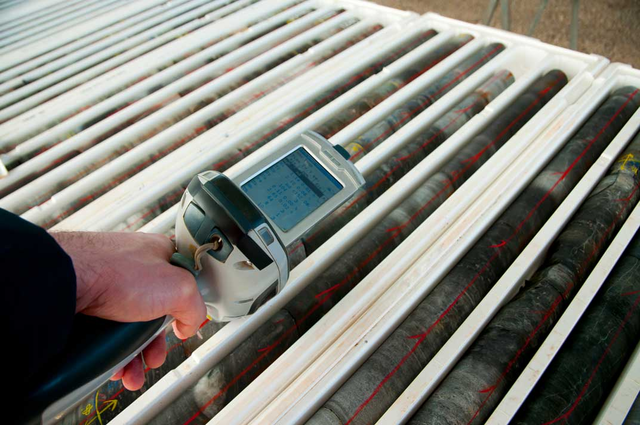
Introducing CELLIANT XRF Fabric Testing
May 01, 2025 – The pursuit of continual improvement has led us to adopt a powerful new method of analysis for CELLIANT-powered fabrics: X-Ray Fluorescence (XRF) Testing…

Smart textiles are traditionally thought of as fabrics that use electronic sensors and features to inform the wearer (most often we see this in the form of health metric monitoring). The purpose of these textiles is just as the name implies: to be smarter than your average fabric. These advanced materials typically relay real-time data by monitoring the environment and the wearer.
Global apparel brands are no strangers to implementing the latest technologies into their offerings–and with the introduction of smart textiles, the industry is entering a new phase. When paired with bio-responsive textiles, the consumer has a new tool to not only monitor but also improve their health and wellbeing, for example, through an infrared-infused shirt used for a workout or temperature-regulating sheets used to help recover. Whether wearers are active athletes interested in boosting performance or average consumers looking to lead a healthier lifestyle, bio-responsive textiles are their answer.
Early iterations of bio-responsive textiles included ones that changed colours based on the wearer’s body temperature, though these changes had no direct impact on health. As mentioned, the textile industry is ever-evolving, and the next generation of innovations has arrived. Today’s smart textiles focus not only on monitoring with electronics, but also include bio-responsive options that aim to achieve tangible health benefits. Apparel companies have partnered with ingredient brands to enable users to do everything from responding to cell phones with the touch of a sleeve to regulating body temperature with heated running jackets.
Right now, the market size for smart apparel is estimated to exceed $5.55 billion in the next five years, indicating not only a strong interest, but a willingness from consumers to actually invest in these products. Brands that are able to meet the demand for this growing sector while simultaneously providing benefits for the consumer creates a win-win for both.
The most innovative brands are now shifting focus from textiles that only have physical fabric benefits, such as waterproofing technology or anti-wrinkle features, to innovations that provide real physiological benefits to the wearer. This is where bio-responsive textiles come in. They offer a variety of performance-boosting benefits by increasing local circulation. The results? Improved tissue oxygenation, stronger performance, faster recovery, and better sleep. Additionally, this technology assists in regulating body temperature and optimizing conditions for peak performance: before, during and after.
This encourages athletes to push their limits and accomplish new feats—whether they’re elite in their field or gearing up to train for their first 5K. Even after their workout, this same technology supports faster muscle recovery, extending the efficacy of their training.
To make these advanced textiles even more appealing for apparel brands, the use cases for smart textiles extend past the marriage of fashion and function. Smart textiles have been applied to wound care scenarios, with thermo-responsive fabric polymers woven into wound dressings to encourage faster clotting and healing. There’s even a subsection of ongoing smart textile and bio-responsive textile research being done on how these emerging technologies can benefit elderly and disabled populations as they seek to improve their quality of life and remain active, indicating how widely beneficial smart and bio-responsive textiles can be to nearly every demographic.
Moreover, smart textiles have found a place in the athleticwear marketplace relatively quickly, thanks to the proliferation of fitness tracking capabilities and consumer emphasis on wellness. As consumers continue to seek out new ways to reduce stress, sleep better, recover faster from strenuous workouts, and boost their mental and physical health, smart textiles, and now bio-responsive fabrics, offer brands a competitive edge because of their tech-forward positioning, metric tracking enhancements, and relative novelty.
As consumer interest in apparel that goes beyond aesthetics continues to grow, these companies are now seeing the benefits of bio-responsive textiles by entering previously untapped markets. For example, brands like Under Armour and Decathlon, the world’s largest sporting goods designer and retailer, have incorporated smart textiles into their offerings in order to reach consumers looking for products that will help their overall well-being.
Finally, as athletes and everyday consumers alike balance their desire for real-time data with their ability to positively influence that data beyond diet, exercise, and sleep, the next stage of innovation will be in the actual materials they use to perform at their best—and smart, bio-responsive textiles are ideal solutions. Brands, in turn, can take advantage of this growing consumer trend by developing new types of apparel that maximize performance, increase market share, consumer loyalty, and, ultimately, profits.
Interested in discussing this topic and more with our team?
Fill out the form below to get in touch.
Seth Casden is the CEO and co-founder of Hologenix, a materials science company dedicated to developing products that amplify human potential. CELLIANT®, its flagship technology, is an infrared ingredient brand that enhances textile-based products with health and wellness benefits across performance, recovery and sleep. This article was originally published in Electronic Health Reporter.



May 01, 2025 – The pursuit of continual improvement has led us to adopt a powerful new method of analysis for CELLIANT-powered fabrics: X-Ray Fluorescence (XRF) Testing…

February 21, 2025 – Photobiomodulation (PBM), sometimes referred to as low-level light therapy, is a form of light therapy that uses specific wavelengths of red and near-infrared…

September 13, 2024 – Understanding metabolic rate is important because it plays a key role in energy levels and overall well-being. While metabolic rate varies…
To access all of our reports please input your email below.
Contact us at marketing@celliant.com
Thank you for your request. Please download the brochure below.
Sign up for the latest Celliant news and innovations.
REQUEST INFORMATION